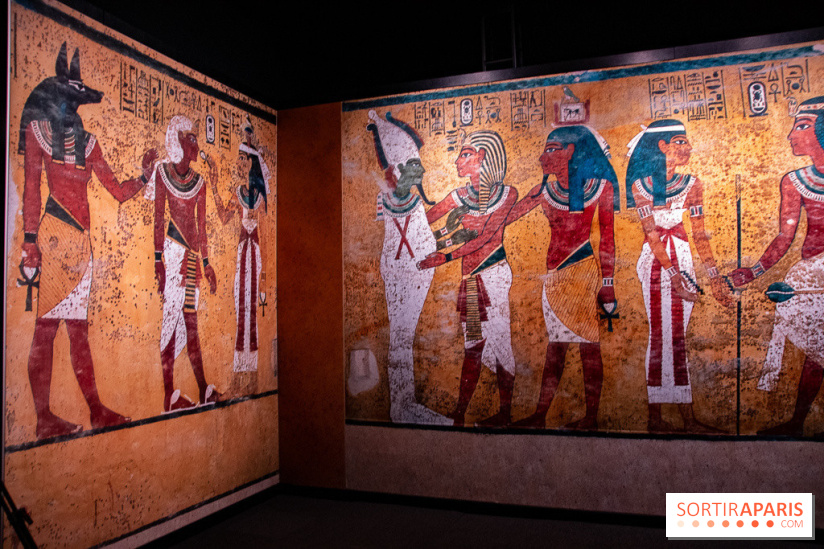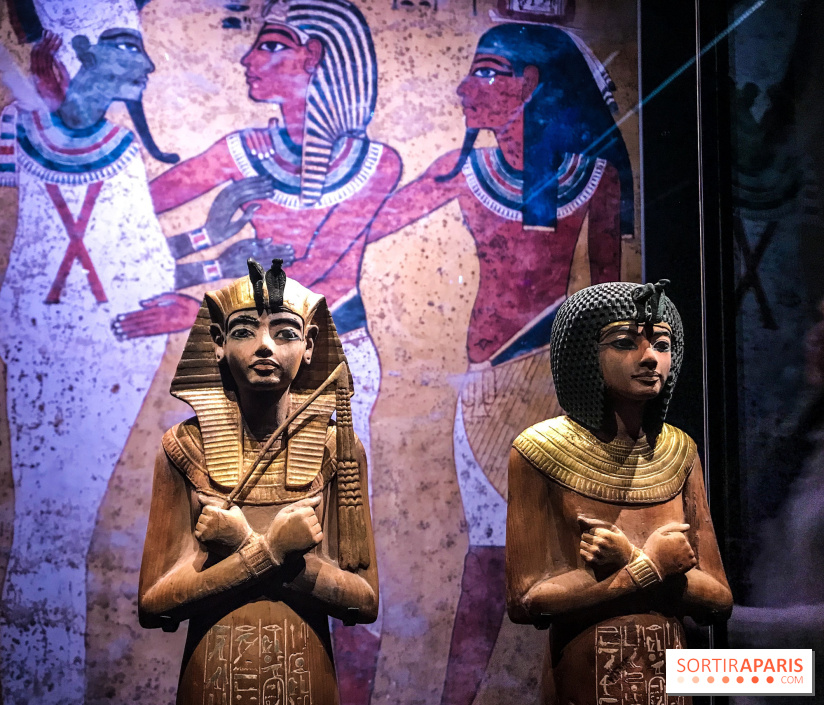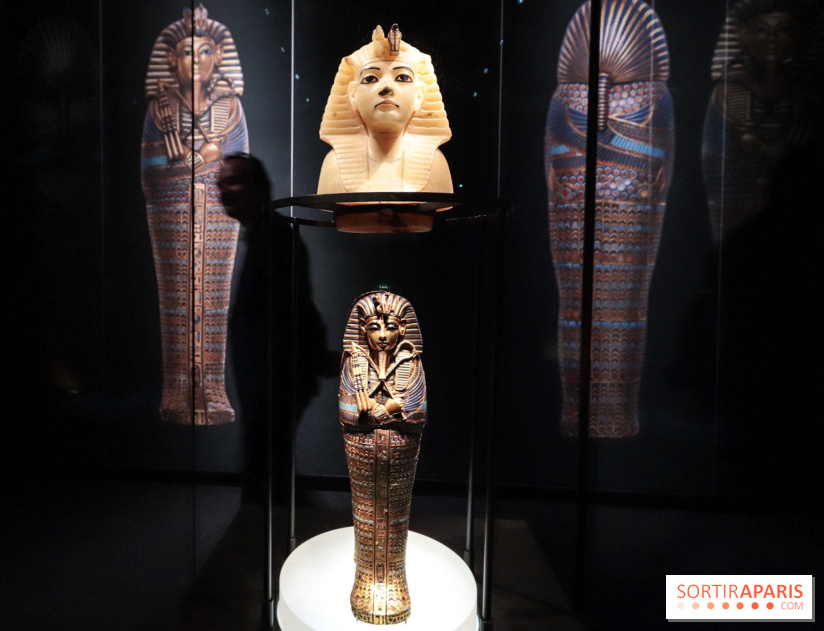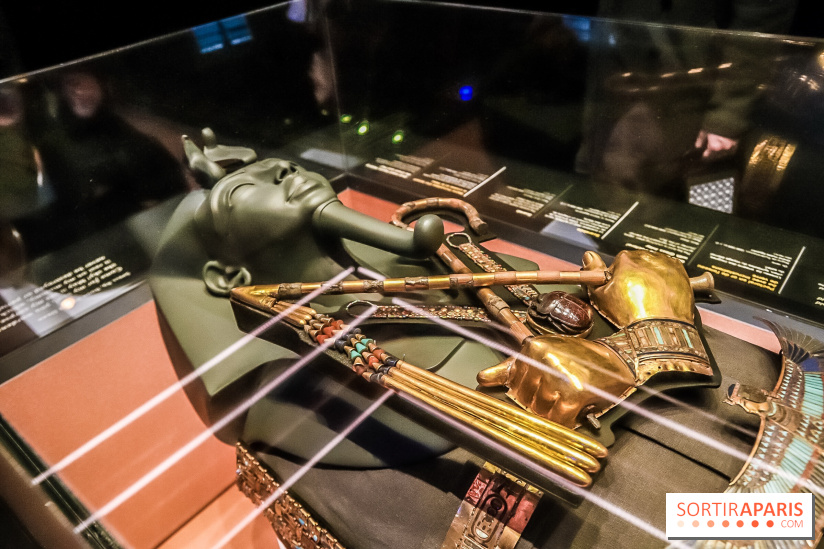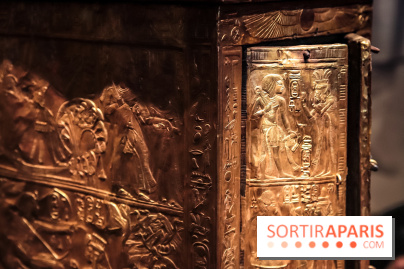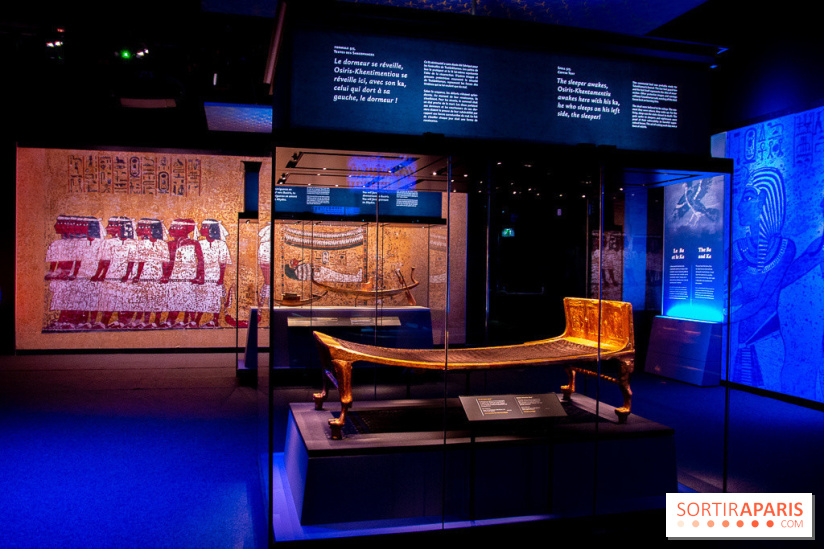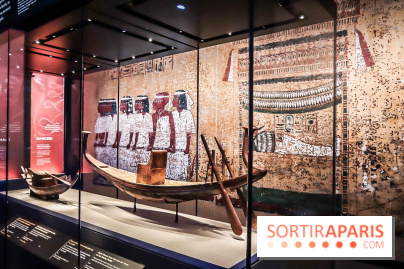Tutankhamun, the Pharaoh's treasure, is the name of theexhibition installed untilSeptember 22, 2019 at the Grande Halle de la Villette.
Organized by the Ministry of Egyptian Antiquities and, of course, with the support of the Musée du Louvre, this immersive exhibition brings together over 150 original objects taken directly from Tutankhamun's tomb.
The exhibition is an invitation to travel and discover. The mere mention of this Pharaoh's surname plunges us into a desert of sand and conjures up images of pyramids, sarcophagi, mummies and hidden treasures.
Indeed, if the reign of this Pharaoh was short and inglorious, the mystery that surrounds his name comes from the discovery of his tomb and the fabulous treasure it conceals, by Britisharchaeologist Howard Carter on November 4, 1922. Carter described his discovery in the following terms: "As my eyes became accustomed to the light, the details of the room slowly emerged from the gloom, strange animals, statues and gold, everywhere the glitter of gold."
Almost 100 years after the discovery of this tomb, Paris is devoting an exhibition to Tutankhamun. Over 150 pieces are on display, including 60 objects leaving Egypt for the first time. Among them: coffins and sarcophagi adorned with precious stones such as lapis lazuli, vases decorated with hieroglyphics and some of the toys and souvenirs that accompanied the child pharaoh during his burial.
For the ancient Egyptians, death was considered the beginning of a new life, but this rebirth was only possible if the body of the deceased was preserved with appropriate rites and surrounded byfunerary objects to accompany it on this perilous journey. Whatever the case, these objects, on display in Paris from March 23 to September 15, 2019, continue to perpetuate the memory of the pharaoh and his immortality.
Among the pieces to be discovered are :
See you at the Grande Halle de La Villette.
Please note that it's been over 4 years since our last visit, so the place and experience may have changed.
Dates and Opening Time
From March 23, 2019 to September 22, 2019
Location
La Grande Halle de La Villette
211 Avenue Jean Jaurès
75019 Paris 19
Access
Metro line 5 "Porte de Pantin" station
Recommended age
For all
Official website
expo-toutankhamon.fr
More information
Every day except Friday and Saturday: 08:30 to 22:30 (last visitor entrance at 20:30) Fridays and Saturdays: 08:30 to midnight (last visitor entrance at 22:00)
